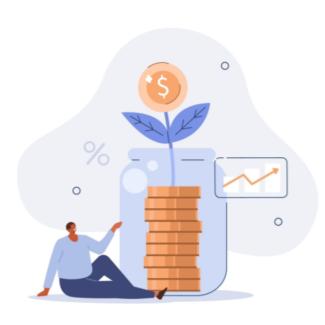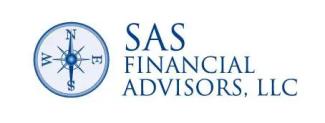
What's the anticipation on inflation?
Today Fed Chairman Powell testified in front of the Senate and stated that it is likely that interest rates will rise farther than markets anticipate in order to slow the economy and in turn slow inflation. The result of his statements was a stock market decline as well as an increase in interest rates with the 2-year US Treasury rate reaching 5% for the first time since 2006-before the great recession and financial meltdown.
As interest rates move higher, especially locking in a rate of 5% with US Treasuries, the fixed income market has become very attractive. Why? Because the common safe withdrawal rate in retirement of 4% plus inflation makes fixed income more attractive than it has been since 2006 even though US Treasury rates fall short of the rate of inflation at 6.5%. By locking in a 5% or greater fixed income rate for 2 or more years, we are anticipating inflation falling back to under 3% over the next few years or sooner.
The five-year anticipated inflation rate published by the St. Louis Federal Reserve bank is currently 2.22%. It is the best data we have available to us in regard to future inflation. The current peak of the Treasury yield curve is actually the 6-month rate of 5.32% today. Much attention is paid to the highest return on the yield curve but with many years of experience, a ladder of maturities allows you to be less focused on receiving the highest rate of return and more focused on a strategy that does not involve guessing future interest rates.
Investing in practically risk-free investments for a return of 5% or better compares very favorably with the 100-year historical return of the stock market at 6.5%. An equity risk premium (the return above the risk-free rate of return to encourage investing in riskier assets) of 1.5% does not offer a favorable historical risk/return ratio.
During the extended period of low interest rates, fixed income returns were very low on purpose. This created demand for higher return investments like the stock market. That relationship has changed!
For the record 2022 fared no better for actively managed mutual funds than previous years. From Barron’s “Slightly more than half of U.S. large-capitalization stock fund managers underperformed the S&P 500 SPX +0.14% index in 2022—for the 13th consecutive year—upending the narrative that active funds can better navigate market downturns than their passive peers.”
Tax Season:
Now that CA and the Franchise Tax Board have aligned with the IRS on tax filing and due date of 10/16/23, the recommended strategy is if you are due a refund file early, but if you owe estimated tax, or you owe the IRS take the funds and invest in US Treasuries that are due close to the October date. You can earn over 4% and maybe 5% state tax free. If you have questions or interest in investing cash due for taxes click the link | SAS Financial Advisors, LLC (sasadvisors.com) to book a meeting.
Weekly Catch-Up - News Articles That Caught Our Eye
- Kids who do these 12 things have 'highly sensitive' brains—why parenting experts say it's an 'advantage'
- 2022 tax returns: IRS further extends filing deadline for most Californians.
- Retirement Planning: A 5-Step Guide for 2023 - NerdWallet
- A psychology expert shares the 7 toxic signs of 'highly insecure' people—and how to deal with them (msn.com)
- I’m a nutritionist from Japan, home to the world's longest-living people—here are 5 longevity foods we eat every day | The Atlanta Press
- The Superpowers of Highly Sensitive People - WSJ
- Mediterranean and MIND diets reduced signs of Alzheimer's in brain tissue, study finds | CNN
This website is informational only and does not constitute investment advice or a solicitation. Investments and investment strategies recommended in this blog may not be suitable for all investors. SAS Financial Advisors, LLC and its members may hold positions in the securities mentioned within this newsletter. SAS Financial Advisors, LLC is not responsible for any third-party content referenced.
The SAS Newsletters are posted on the SAS Blog weekly: https://www.sasadvisors.com/blog

